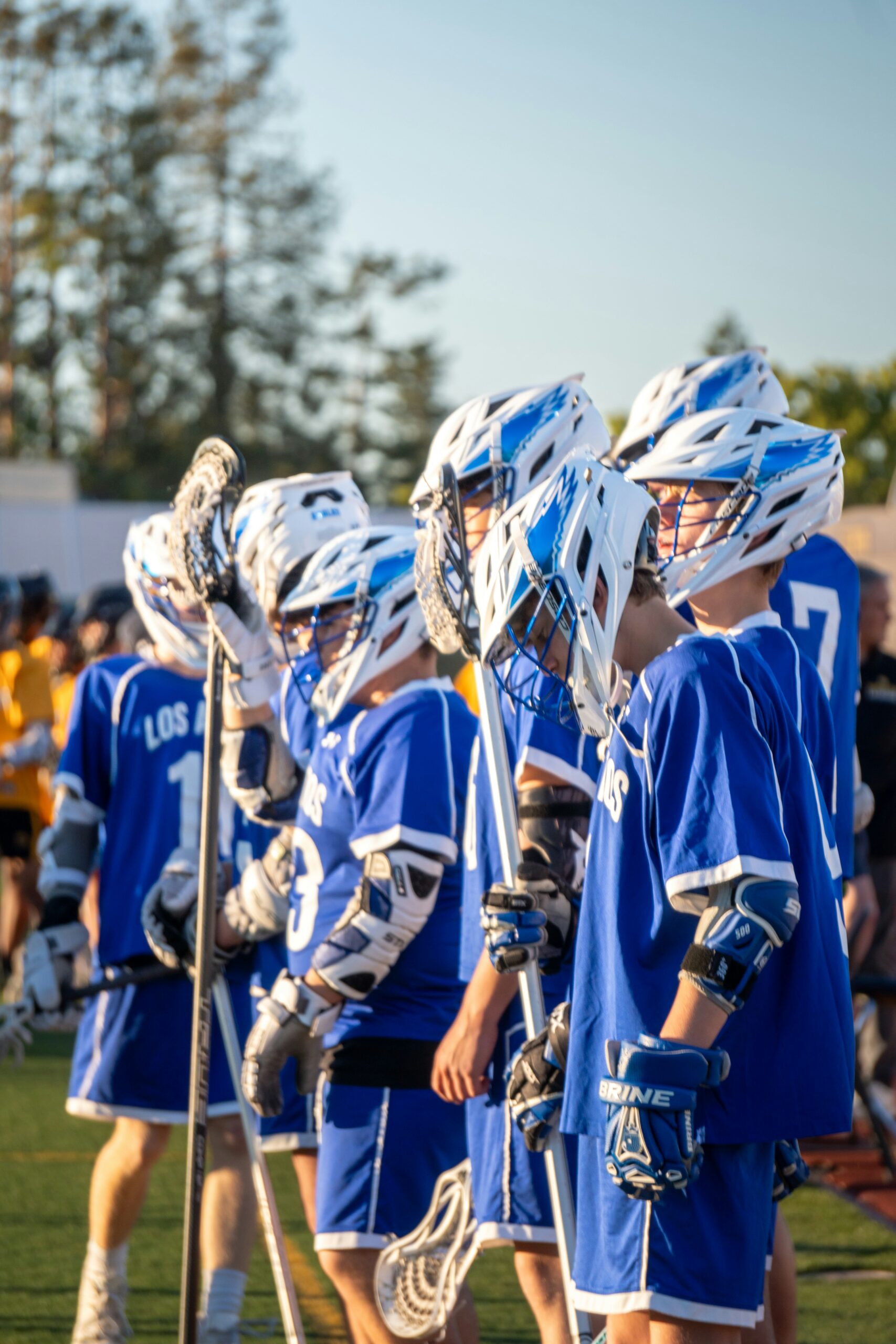Warm-ups are the foundation of every successful lacrosse practice and game. They serve three critical purposes: preventing injuries by preparing muscles and joints for intense activity, activating the muscle groups needed for lacrosse-specific movements, and sharpening stick skills before full-speed play begins.
A proper warm-up sets the tone for the entire practice session. It gets players physically ready by increasing heart rate and blood flow while also establishing the mental focus needed for high-level training. Players who complete a structured warm-up are more alert, move more efficiently, and make fewer mistakes during practice.
This guide covers simple but highly effective lacrosse warm-up drills that any team can implement. These routines prepare players for the demands of lacrosse while building skills and team chemistry from the moment practice begins.
Dynamic Movement & Mobility
The first phase of any lacrosse warm-up should focus on getting blood flowing and preparing joints for the multi-directional movements that define the sport. Dynamic movements are far more effective than static stretching for preparing the body for athletic activity.
Start with light jogging to gradually increase heart rate and warm up the major muscle groups. Progress to high knees, which activate the hip flexors and improve running mechanics. Butt kicks target the hamstrings and quadriceps while reinforcing proper running posture.
Lateral shuffles and carioca (grapevines) prepare players for the side-to-side movements that are constant in lacrosse. These exercises activate the muscles used for defensive slides, dodging, and quick direction changes. Focus on maintaining good posture and staying low throughout these movements.
Walking lunges with rotation combine lower body mobility with core activation. As players step into lunges, have them rotate their torso toward the front leg. This movement pattern mimics many lacrosse actions and helps open up hip mobility that’s crucial for powerful movements.
Hip openers are especially important for lacrosse players who need excellent hip mobility for dodging, shooting, and defensive positioning. Simple exercises like leg swings and hip circles help prepare these crucial joints for game-speed movements.
This entire dynamic movement phase should last 5-7 minutes, with the primary goals being increased blood flow, loosened joints, and full-body activation. Players should feel warm and loose, but not fatigued, when transitioning to the next phase.
Stick Skills in Motion
Once players are physically warmed up, it’s time to introduce the stick and begin working on lacrosse-specific skills. This phase combines continued movement with skill development, making efficient use of warm-up time.
Quick stick exercises help players develop the rapid hand movements essential for lacrosse. Have players pair up and practice rapid-fire passing without cradling between catches. This drill improves hand-eye coordination while reinforcing the quick release skills needed in games.
“Over-the-shoulder” passing drills mimic the game-like clearing situations that happen frequently in lacrosse. Players run while making passes back over their shoulder to teammates, simulating the passes defenders make when clearing the ball after a save or turnover.
Wall ball variations keep all players active even when working on individual skills. Players can practice various passing and catching techniques while maintaining movement, ensuring that stick work doesn’t become static or boring.
Emphasizing both hands early in the warm-up builds ambidexterity and confidence. Have players alternate between right and left hand passing, or designate specific time periods for off-hand work. This early emphasis on weak-hand development pays dividends throughout the entire practice.
The key is maintaining movement throughout all stick work. Players should never be standing still during warm-up stick skills – they should always be moving, turning, or changing direction to simulate game conditions.
Footwork and Quickness
The footwork phase of the warm-up targets the explosive movements and agility that separate good lacrosse players from great ones. These drills prepare players for the quick reactions and direction changes that define lacrosse.
Short shuttle sprints with change of direction build the acceleration and deceleration skills needed throughout the game. Set up cones 10-15 yards apart and have players sprint between them, focusing on quick starts and sharp cuts. These movements directly translate to getting to ground balls and beating defenders.
Defensive footwork mirrors or closeout drills prepare defenders for the specific movements they’ll use in games. Have players practice shuffling, backpedaling, and closing out on imaginary attackers. These movements activate the muscles and movement patterns that defensive players rely on.
For attackers, quick dodges into space help prepare the explosive movements needed to beat defenders. Set up simple dodge patterns where players can practice face dodges, split dodges, or roll dodges at game speed. Focus on quick acceleration out of the dodge.
The emphasis throughout this phase should be on building reaction speed and getting players game-ready. Movements should be sharp and explosive, but controlled enough to maintain proper technique. Players should feel alert and ready for high-intensity activity by the end of this phase.
Short Cooldown & Stretch
The final phase of the warm-up involves a brief cooldown and stretching routine that helps players transition smoothly into full practice activities. This phase prevents stiffness and helps maintain the mobility gained during the dynamic warm-up.
Static stretches for major muscle groups help maintain flexibility and prevent tightness. Focus on hamstrings, quadriceps, hip flexors, and shoulders – the areas that work hardest during lacrosse play. Hold each stretch for 15-20 seconds, emphasizing proper form over intensity.
Stick-assisted stretches make efficient use of equipment while targeting lacrosse-specific areas. Players can use their stick shaft for balance during single-leg stretches or for shoulder rotation exercises that prepare the throwing motion.
Include a brief breathing reset that helps players transition mentally from warm-up to practice. Simple deep breathing exercises help players focus and prepare for the more intense activities that follow.
This cooldown phase should be brief – 3-4 minutes maximum – to maintain the energy and readiness built during the earlier phases. The goal is maintaining mobility and focus, not deep relaxation.
Conclusion
A well-structured lacrosse warm-up seamlessly blends dynamic movement, stick skills, and game-simulated activities into a comprehensive preparation routine. This approach helps players reach full speed more quickly while significantly reducing the risk of injury. Teams that consistently execute quality warm-ups create better practices, develop skills more effectively, and perform at higher levels when it matters most. The 15-20 minutes invested in proper warm-up pays dividends throughout the entire practice or game.
Want to help your player develop better practice habits and skills? Athletes Untapped connects families with experienced lacrosse coaches who can teach proper warm-up routines and fundamental skills through personalized training sessions.




